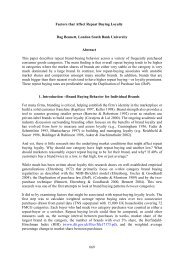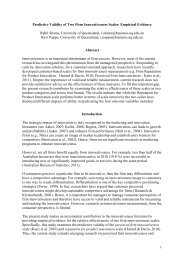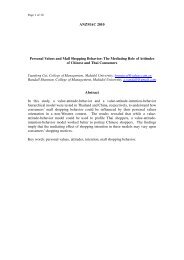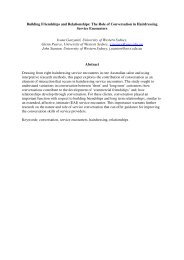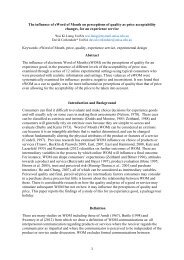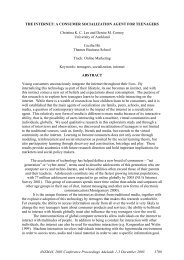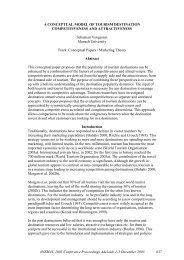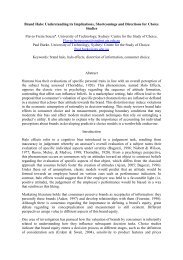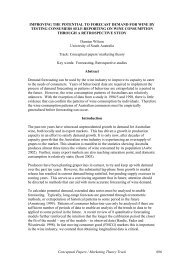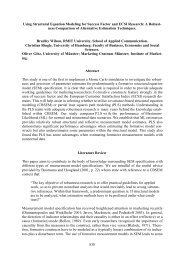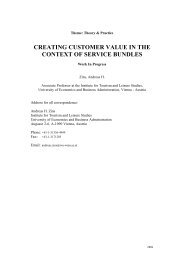PROFILING THE FRUGAL CONSUMER Sarah Todd and ... - ANZMAC
PROFILING THE FRUGAL CONSUMER Sarah Todd and ... - ANZMAC
PROFILING THE FRUGAL CONSUMER Sarah Todd and ... - ANZMAC
You also want an ePaper? Increase the reach of your titles
YUMPU automatically turns print PDFs into web optimized ePapers that Google loves.
enable comparisons to be made between those with lower (42%) <strong>and</strong> higher (48%)<br />
levels of frugality. This method of performing a median split to examine contrasting<br />
groups is an accepted method that has been employed in many pieces of consumer<br />
research (e.g. Lawson, <strong>Todd</strong> <strong>and</strong> Boshoff 2001; Feick <strong>and</strong> Price 1987; <strong>Todd</strong> &<br />
Lawson 2002) <strong>and</strong> also has an advantage in that it avoids assuming potential linearity<br />
in relationships that is implicit in other tests such as ordinary correlation <strong>and</strong><br />
regression.<br />
Associations between the level of frugality <strong>and</strong> a number of demographic, socioeconomic,<br />
behavioural <strong>and</strong> attitudinal variables were then examined. Table 1<br />
provides a summary of all the significant associations observed (p=0.000).<br />
Discussion <strong>and</strong> Conclusions<br />
In their seminal article on the measurement of frugality, Lastovicka et al. (1999)<br />
proposed that future research should examine frugality both as a dependent <strong>and</strong> as an<br />
independent variable. Discussing firstly its role as a dependent variable, they note<br />
their failure to find a relationship between either frugality <strong>and</strong> age or frugality <strong>and</strong><br />
income. Admitting themselves that this seemed somewhat counterintuitive, they<br />
recommended this as an aspect that required further investigation. Looking at the<br />
findings from our nationally representative sample, it is evident that a significant<br />
relationship was found between age <strong>and</strong> frugality, although this is not linear in that<br />
those aged between 25 <strong>and</strong> 29 years were actually even less frugal than their younger<br />
counterparts (aged 18 to 24yrs.) Other than that exception though, the general<br />
conclusion to be made from our research is that frugality is positively correlated with<br />
age. It is difficult to compare this with findings in the VS area (such as those of<br />
Craig-Lees <strong>and</strong> Hill 2002) because<br />
<strong>ANZMAC</strong> 2003 Conference Proceedings Adelaide 1-3 December 2003 274



